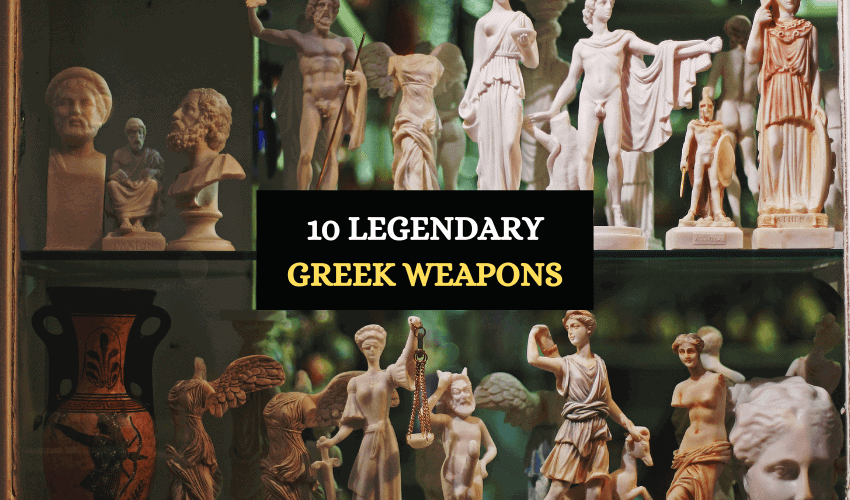
Table of Contents
Greek mythology is the home of many fantastic and magical weapons used by the Greek heroes, demi-gods, gods, and Titans. Yet, for some reason, Greek myths aren’t usually associated with their heroes’ weapons as much as say the Norse myths.
One reason for that might be that, while the ancient Greeks were a war-like culture, they aren’t really been remembered as such in modern days. Another factor might be that many of the Greek gods’ and heroes’ weapons don’t really have names – they are just known as Poseidon’s Trident, Apollo’s bow, and so on.
All this shouldn’t distract from the great number of Greek mythology weapons nor from their awesome power and fantastic abilities. In fact, Greek mythological items and weapons have not only inspired most magical objects in modern fantasy but also many other ancient religions around the world as well.
The 10 Most Famous and Unique Greek Mythology Weapons
A fully comprehensive list of all the magical weapons, armor, and items in Greek mythology would include hundreds of items and would essentially turn into an entire book. In this article, however, we’ll list the most powerful, memorable, and famous weapons in all of Greek mythology.
Zeus’s Thunderbolt
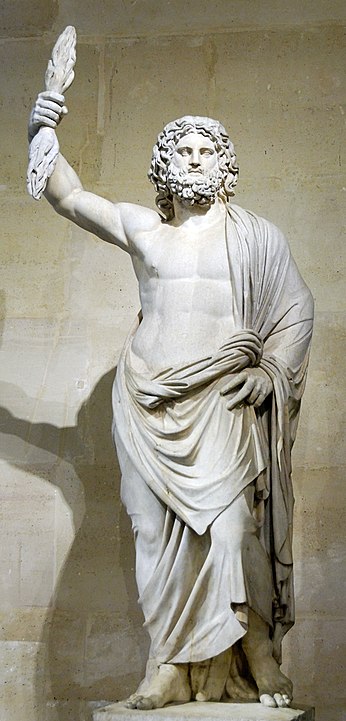
Yes, Zeus’s Thunderbolt was an actual weapon and not just lightning and thunder he could generate out of his hands. The Thunderbolt was given to Zeus by the Cyclopes after he freed them and killed his own father – and the Cyclopes’ jailor – Cronus.
Zeus’s Thunderbolt was without doubt the most powerful weapon and item in all of Greek mythology. Zeus could shoot out unstoppable thunderbolts with it that could destroy and kill everything in their path.
Zeus used his Thunderbolt to maintain an unchallenged rule over the Greek pantheon and the rest of the world and – according to Greek myths – rules Olympus with it to this day. In fact, Zeus accomplished one of his greatest feats with the help of his Thunderbolt by killing the giant serpent Typhon who was sent to kill Zeus by Gaia as revenge for the murder of Cronus.
Typhon was the Greek equivalent of the Norse World Serpent Jörmungandr who the Norse thunder god Thor had to battle during Ragnarok. And while Thor managed to kill Jörmungandr but also died in the fight, Zeus’s Thunderbolt was more than enough for him to slay Typhon almost effortlessly.
Poseidon’s Trident

Poseidon’s Trident is the second most popular weapon in Greek mythology which is fitting given that Zeus’s brother and god of the sea is the second most powerful deity in the Greek pantheon.
The magical three-pronged spear was modeled after standard fishing tridents which ancient Greek fishermen used to spear fish. Poseidon’s Trident was no ordinary fishing tool, however. It was created by the blacksmith god Hephaestus with help from the Cyclopes and it was a gorgeous and perfectly sharp weapon that Poseidon would rarely be seen without.
By slamming the Trident down Poseidon was able to generate giant tsunami waves that could sink large armadas of ships or flood entire islands. The weapon could also cause earthquakes or pierce any shield or armor.
Hades’s Bident (or Trident)
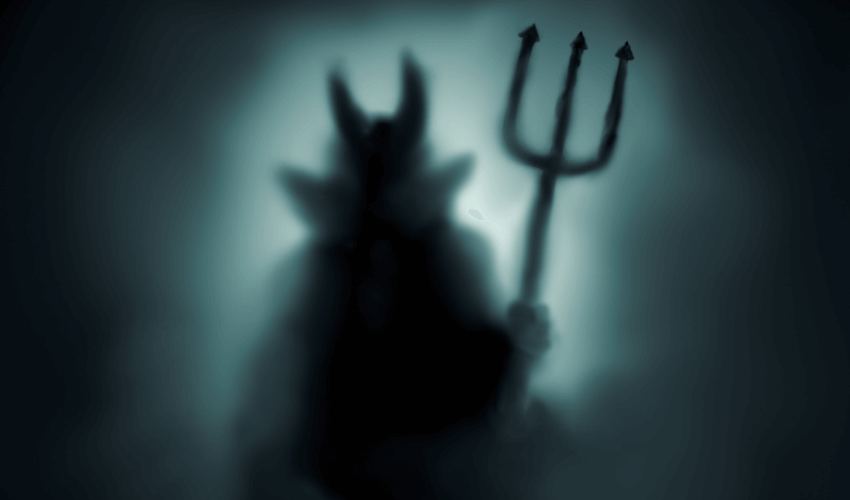
Hades’s Bident or Hades’s Pitchfork isn’t as popular as Poseidon’s Trident but it has translated into other ancient religions in a similar way. Many of the Underworld gods, devils, or demons in other cultures also carry around bidents or tridents to torture the lost souls in their care and Hades might be the primary source of that image.
The biggest indication that Hades’s Bident is the original “Devil’s pitchfork” comes from Hercules Furens (“Hercules Enraged”) by Seneca. There, Seneca describes him as using a bident or a trident called Dis in Roman or Plouton in Greek. The god of the Underworld used the weapon to successfully drive Hercules out of the Underworld.
Seneca also refers to Hades’s Pitchfork as the Infernal Jove or the Dire Jove. The weapon is said to “give dire or ill omens.”
The Aegis
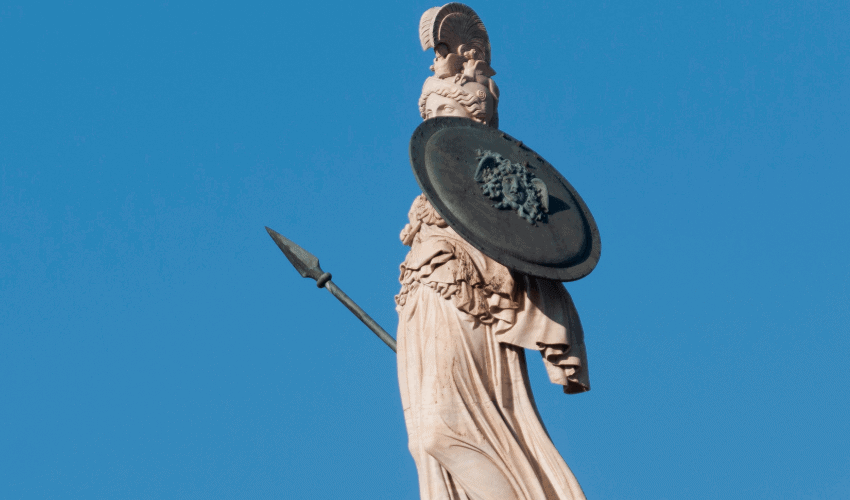
Another powerful weapon crafted by Hephaestus, the Aegis is technically a shield but it’s also used as a weapon. According to Greek myths, the Aegis is made out of polished brass and is also referred to as a mirror or as a brass.
The Aegis has been used by several different gods in Greek mythology, the most famous ones being Zeus himself, his daughter and goddess of war Athena, as well as the hero Perseus.
Perseus’s use of the Aegis is especially legendary as he used it in his fight with Medusa. After Perseus killed and beheaded Medusa, her head was forged onto the Aegis to make it even more powerful.
Medusa’s Head
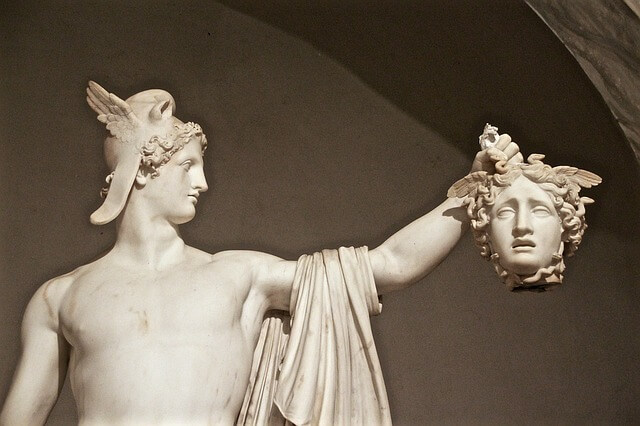
The myth of Medusa is well-known even if it’s often misinterpreted. Regardless, Medusa’s head and her hair made out of snakes were used as a “weapon” not only by Medusa herself but even after her death.
Medusa was cursed to turn everyone who met her gaze into stone and her head retained that curse even after Perseus beheaded Medusa. After his victory, Perseus gave the Aegis and Medusa’s head to Athena and the war goddess forged the two items together, turning them into an even more formidable weapon.
Hermes’s Caduceus
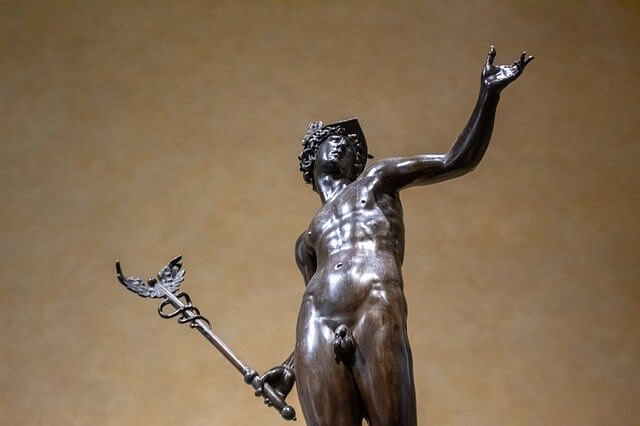
Hermes is famous as the messenger of the Greek gods – a prestigious title that was given to him by Zeus to tame Hermes’s mischievous nature.
Together with that title, however, Zeus also gave Hermes the Caduceus – a short but magical staff that’s shaped as two interwoven serpents with two small wings at the top. The snakes were meant to represent Hermes’s adaptability and the wings – his speed as a messenger.
The Caduceus wasn’t capable of creating earthquakes or firing thunderbolts, but it was quite a unique weapon, nonetheless. It had the ability to force people into sleep or even into a coma as well as to wake them up if necessary. In some myths, the Caduceus was also carried by Iris, Hera’s personal messenger.
Apollo’s Bow
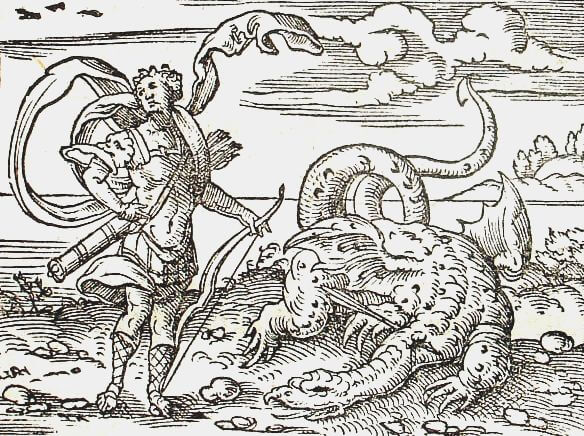
Apollo’s bow is one of those weapons that didn’t really have a name but was nevertheless very much iconic. Apollo is a god of many things – healing, diseases, prophecy, truth, dance, and music, but also of archery. As such, he was almost always depicted carrying a golden bow and a quiver of silver arrows.
One of the biggest feats Apollo was able to achieve with his golden bow was to kill the serpent dragon Python, the nurse of the giant serpent Typhon that Zeus killed with his Thunderbolt. It’s worth noting that, while this may look like a lesser feat than Zeus’s, Apollo is said to have still been just a child when he shot and killed Python.
Cronus’s Scythe
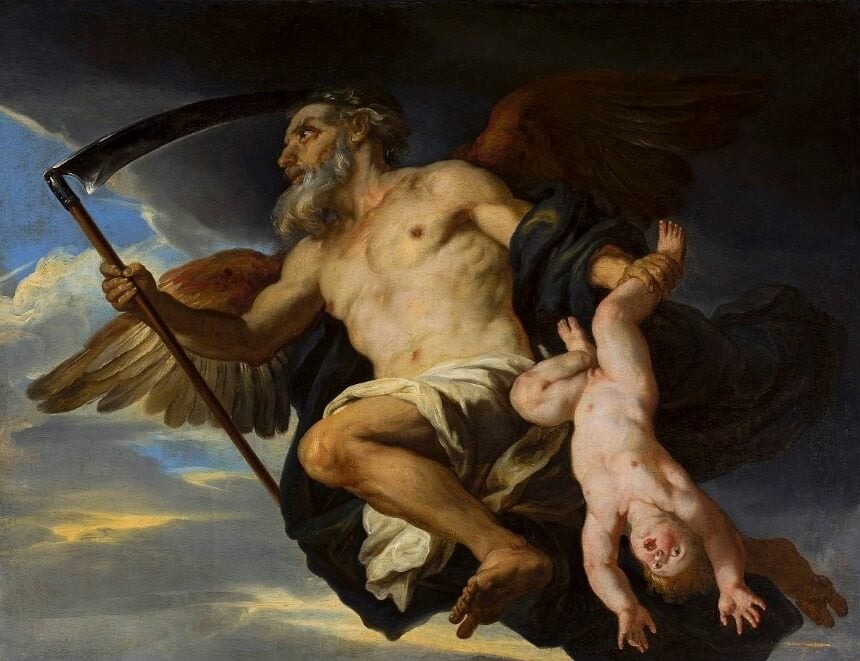
A father to Zeus and all the Olympian gods, the Titan of time Cronus was himself the son of the Gaia and Uranus or the Earth and the Sky. Because Uranus had imprisoned Gaia’s other children, the Cyclopes and Hecatoncheires in Tartarus, Gaia gave Cronus a powerful scythe to castrate Uranus with and to depose him.
Cronus did so with ease and soon replaced Uranus as a ruler of all Greek gods. Cronus didn’t free Gaia’s other children, however, something for which she cursed him to one day be deposed by one of his own children. That child ended up being Zeus, the current King of the Greek gods, who defeated Cronus and threw him into Tartarus.
Ironically, Gaia then cursed Zeus for killing Cronus and sent Typhon to avenge the Titan of time, but Typhon failed. As for Cronus’s scythe, it’s either in Tartarus together with its owner or is lost somewhere on Earth.
Eros’s Bow
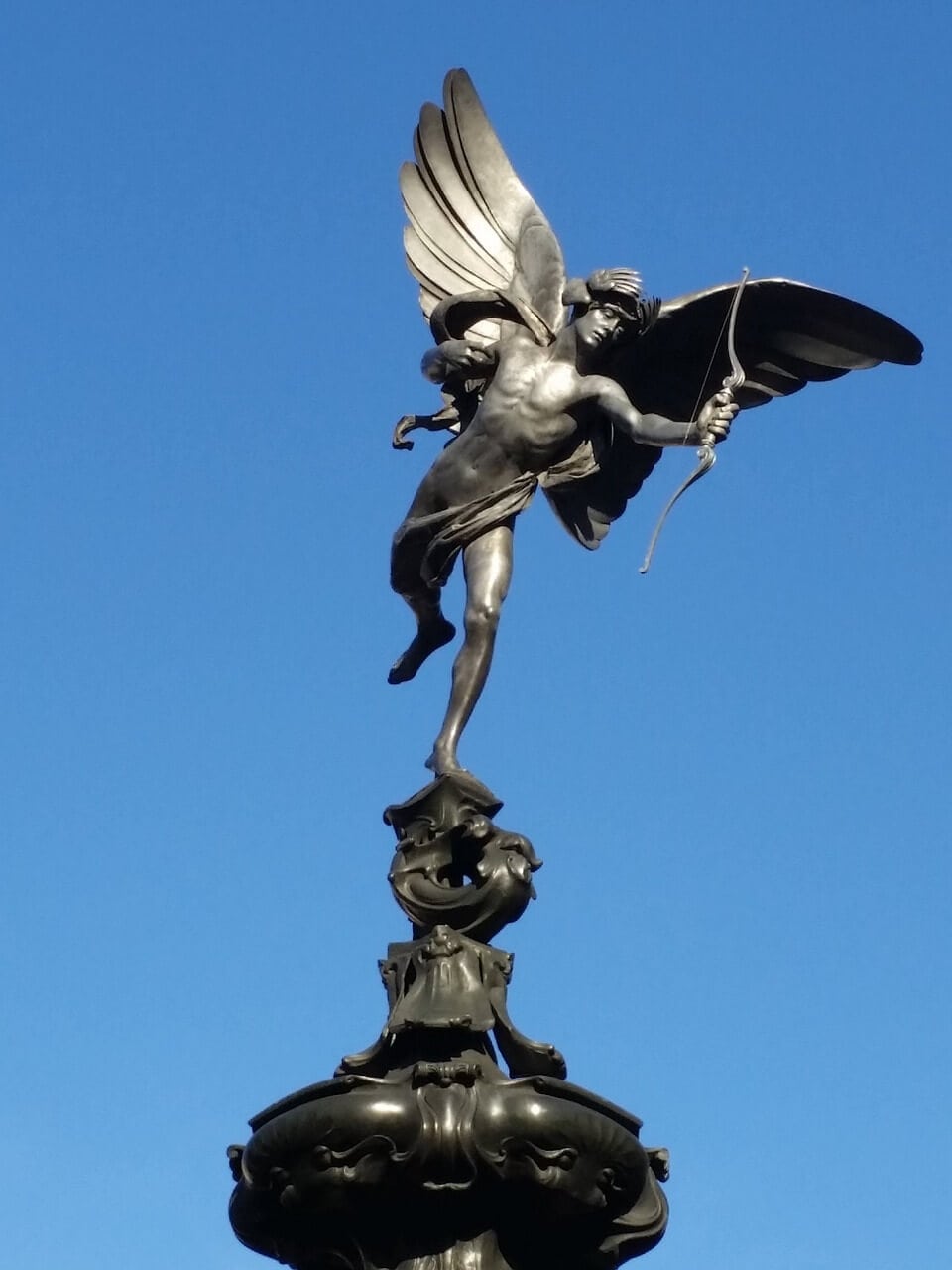
Eros was the Greek god of love and sex, and an earlier equivalent of the Roman god Cupid. Some myths describe him as the son of the goddess of love Aphrodite and the god of war Ares while other myths claim Eros was an ancient primordial god.
Whatever the case, Eros’s most famous possession was his bow – a weapon that he used to “make love, not war.” The bow was sometimes said to generate its own arrows or to shoot a single arrow that then returned to Eros.
Either way, a common misconception is that Eros’s arrows were used only to make people love somebody. They could do that, of course, but they could also force people to hate the first person they saw after being shot too.
Heracles’s Bow
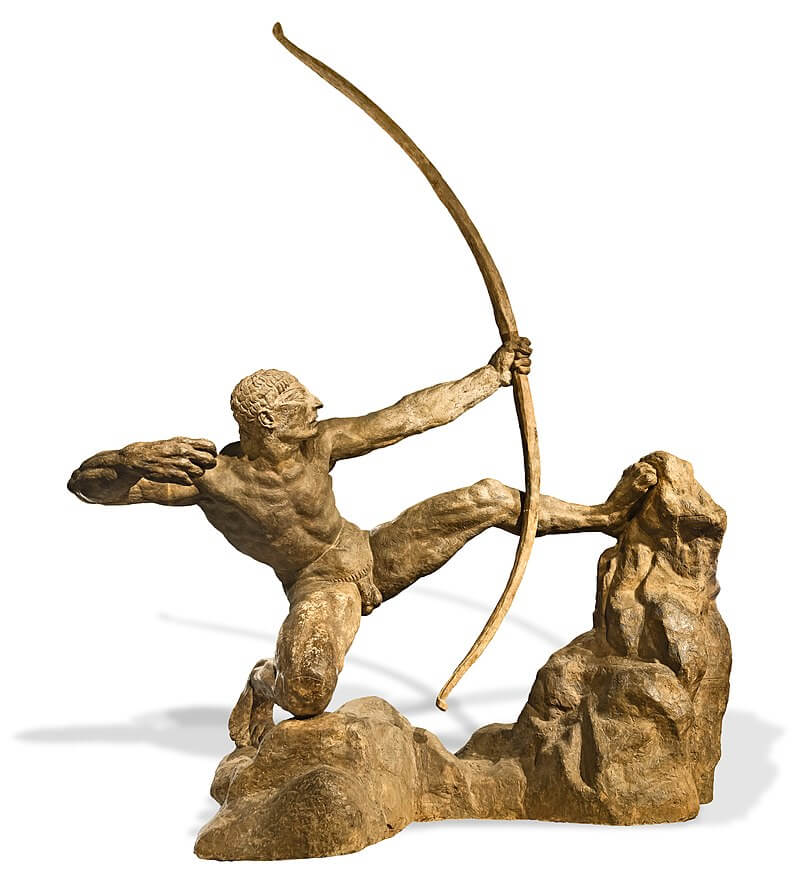
The third and final bow on this list was carried by the demi-god Heracles. As the Greek hero was gifted with superhuman strength, his bow was wound up so powerfully that very few others were strong enough to fire arrows with it.
And if it wasn’t enough that Heracles’s bow was as powerful as a ballista, the arrows fired with it were also tipped in the Hydra’s poison – the multi-headed dragon Heracles had killed as one of his 12 labors.
Heracles used his bow to slay the Stymphalian man-eating birds that were terrorizing northern Arcadia. After Hercules’s eventual death, the bow was given to Hercules’s friend Philoctetes (or Poeas in some myths) who was also charged with lighting Heracles’s funeral pyre. The bow and arrows were later used in the Trojan War to help the Greeks conquer Troy.
Wrapping Up
These are some of the most popular weapons used by the characters of Greek mythology. To learn about the most badass weapons in Norse mythology check our article here, and for the most inspiring swords of Japanese mythology, read our list here.








